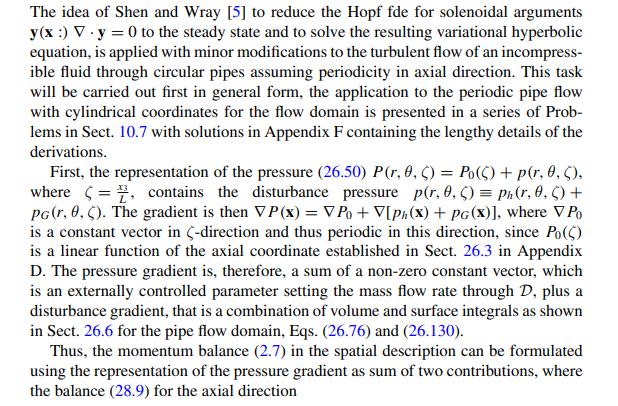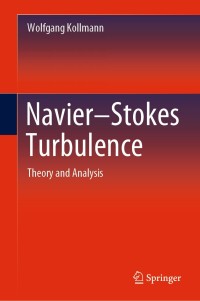Consider the flow through a straight, circular pipe periodic in axial direction. A solenoidal ONS basis (mathcal{B}_{e})
Question:
Consider the flow through a straight, circular pipe periodic in axial direction. A solenoidal ONS basis \(\mathcal{B}_{e}\) was constructed in Sect. 25.21 spanning the test function space \(\mathcal{N}\) for the characteristic functional \(\theta[\mathbf{y} ; t], \mathbf{y} \in \mathcal{N}\). Solve the BVP for the projected characteristic functional \(\theta_{N}\left(y_{0,0,-\frac{1}{2} N}, \ldots, y_{\frac{1}{2} N, N, \frac{1}{2} N}\right)\) introduced in Sect. 10.4 w.r.t. the basis \(\mathcal{B}_{e}\).
10.4.1 Apply the pde (10.21) to the single mode \(N=0\), set up the boundary condition and solve it for \(y \geq 0\).
10.4.2 Compute the coefficients \(a_{k, n, m}^{l, o, q, r, s, t}\) in \(A_{k, n, m}^{r, s, t}=\sum_{l, o, q} y_{l, o, q} a_{k, n, m}^{l, o, q, r, s, t}\) and \(C_{z}^{0, n, 0}\) in \(C\left(y_{0, n, 0}\right)=\frac{\partial P_{0}}{\partial z} \sum_{n=0}^{N} C_{z}^{0, n, 0} y_{0, n, 0}\) the pde (10.21) for several modes, say \(N=2\) and plot the results.
Sect. 10.4

pde (10.21)

Step by Step Answer:

Navier Stokes Turbulence Theory And Analysis
ISBN: 9783030318697
1st Edition
Authors: Wolfgang Kollmann




